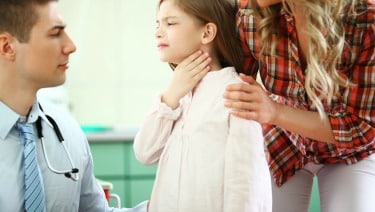Strep throat is a common childhood illness. It is the result of an infection by a bacteria known as Streptococcus. There are several various forms of the bacteria, but the two main types are group A Streptococcus and group B Streptococcus.
Strep bacteria pass from one person to another when an infected person coughs, sneezes, or touches another person or object with a hand contaminated by infected droplets of fluid from the airways or throat. It takes two to seven days for symptoms to appear after someone has been exposed.
Common Symptoms of Strep Throat:
- Sore throat and pain when swallowing
- A red throat that’s swollen and may be dotted with white or yellow pus
- Swollen neck glands (lymph nodes)
- Low to high fever, depending on age, possibly with chills
- Headache and body aches
- Loss of appetite, nausea, and vomiting
- In children, symptoms may also include abdominal pain, vomiting, and a red rash with small spots worse in skin creases and under the arms.
Ways to Prevent Spreading Strep Throat:
- Don’t share utensils, dishes, drinking glasses, food, drinks, napkins, handkerchiefs, or towels.
- Prevent the spread of fluid droplets from sneezing or coughing by covering your mouth and nose.
- Wash hands frequently.
Not all sore throats are strep throats. Most sore throats, which often come with a runny nose, cough and hoarseness, are caused by viruses and usually clear up on their own without medical treatment.

